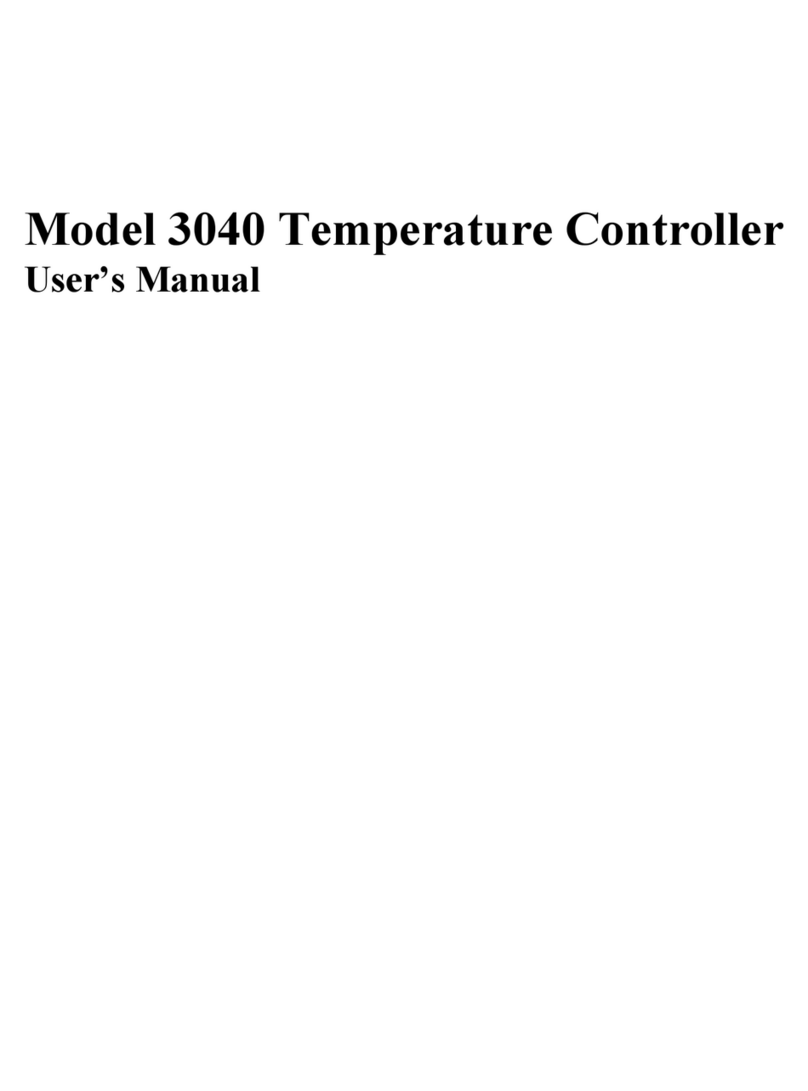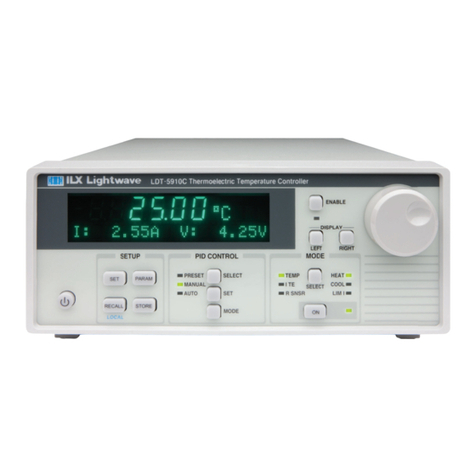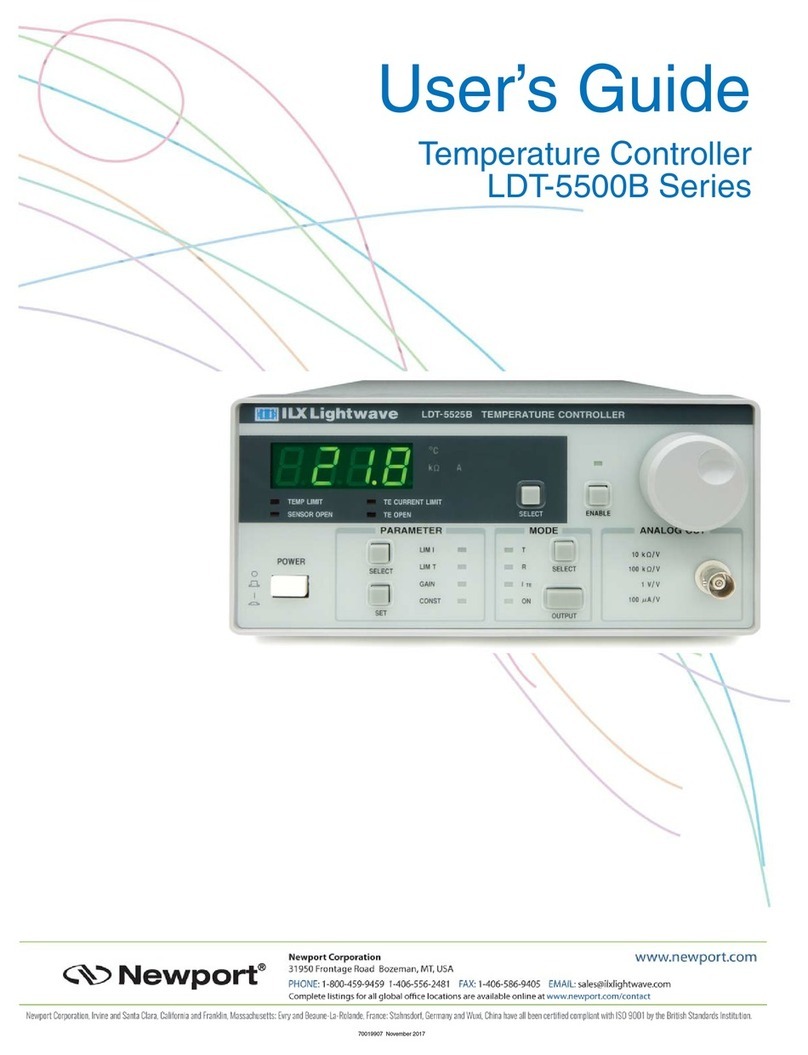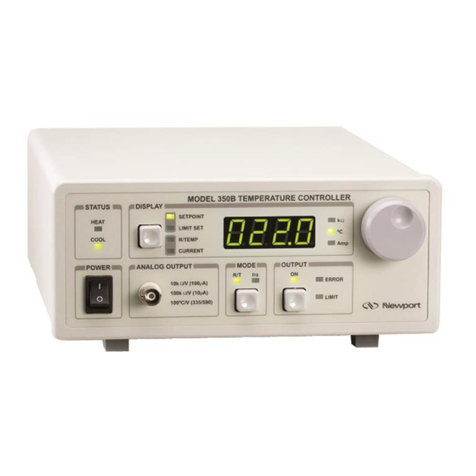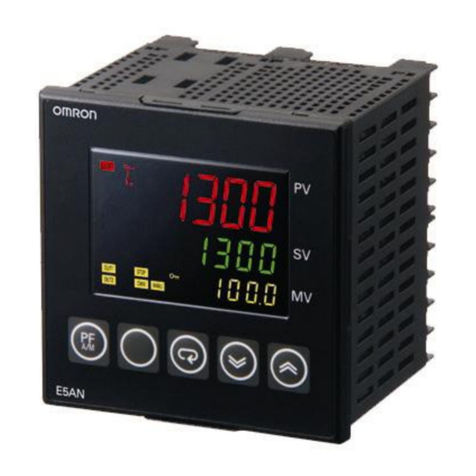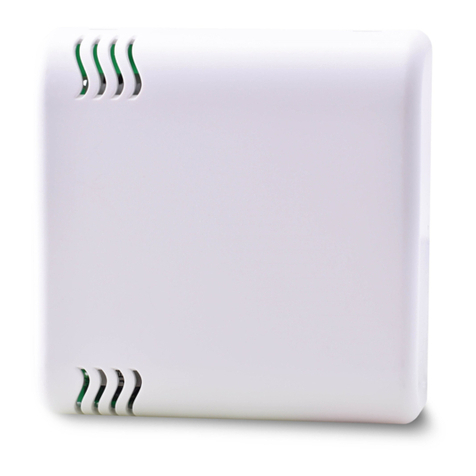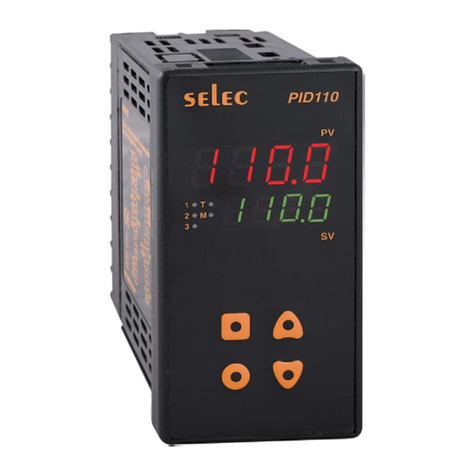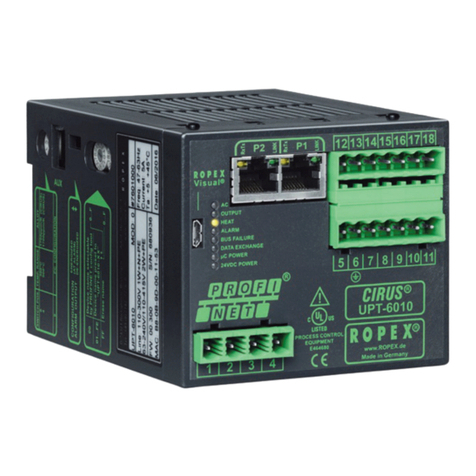Newport 3150 User manual

Model 3150
High Power Temperature Controller
User’s Manual


Corporate Headquarters Canada Italy Netherlands Taiwan R.O.C.
Newport Corporation Telephone: 905-567-0390 Telephone: 02-924-5518 Telephone: 030-6592111 Telephone: 2-2769-9796
1791 Deere Avenue Facsimile: 905-567-0392 Facsimile: 02-923-2448 Facsimile: 030-6570242 Facsimile: 2-2769-9638
Irvine, CA 92714 France Japan Switzerland United Kingdom
Telephone: 949-863-3144 Telephone: 1-60 91 68 68 Telephone: 03-5379-0261 Telephone: 01-740-2283 Telephone: 01635-521757
Facsimile: 949-253-1800 Facsimile: 1-60 91 68 69 Facsimile: 03-5379-0155 Facsimile: 01-740-2503 Facsimile: 01635-521348
Belgium Germany
Telephone: 016-402927 Telephone: 06151-36 21-0
Facsimile: 016-402227 Facsimile: 06151-36 21-52
Newport Corporation, Irvine,
California, has been certified
compliant with ISO 9002 by the
British Standards Institution.

Limited Warranty
Newport warrants that this product will be free from defects in materials and workmanship for a period of two
years from the date of shipment. If any such product proves defective during the applicable warranty period,
Newport, at its option, either will repair the defective product without charge for parts and labor or will provide a
replacement in exchange for the defective product.
In order to obtain service under this warranty, the customer must notify Newport of the defect before the
expiration of the warranty period and make suitable arrangements for the performance of service. In all cases the
customer will be responsible for packaging and shipping the defective product back to the service center specified
by Newport, with shipping charges prepaid. Newport shall pay for the return of the product to the customer if the
shipment is within the continental United States, otherwise the customer shall be responsible for all shipping
charges, insurance, duties and taxes, if the product is returned to any other location.
This warranty shall not apply to any defect, failure or damage caused by improper use or failure to observe proper
operating procedures per the product specification or operators manual or improper or inadequate maintenance and
care. Newport shall not be obligated to furnish service under this warranty 1) to repair damage resulting from
attempts by personnel other than Newport’s representatives to repair or service the product; 2) to repair damage
resulting from improper use or connection to incompatible equipment; 3) to repair damage resulting from
operation outside of the operating or environmental specifications of the product.
THIS PRODUCT IS NOT DESIGNED FOR USE IN MEDICAL INSTRUMENTS WHERE MALFUNCTION
OF SUCH PRODUCTS CAN REASONABLY BE EXPECTED TO RESULT IN PERSONAL INJURY OR
DEATH.
NEWPORT’S LIABILITY FOR THE MERCHANTABILITY AND USE OF THE PRODUCT IS EXPRESSLY
LIMITED TO ITS WARRANTY SET OUT ABOVE. THIS DISCLAIMER AND LIMITED WARRANTY IS
EXPRESSLY IN LIEU OF ANY AND ALL REPRESENTATIONS AND WARRANTIES EXPRESS OR
IMPLIED, INCLUDING BUT NOT LIMITED TO, ANY IMPLIED WARRANTY OF MERCHANTABILITY
OR OF FITNESS FOR PARTICULAR PURPOSE, WHETHER ARISING FROM STATUTE, COMMON LAW,
CUSTOM OR OTHERWISE. THE REMEDY SET FORTH IN THIS DISCLAIMER AND LIMITED
WARRANTY SHALL BE THE EXCLUSIVE REMEDIES AVAILABLE TO ANY PERSON. NEWPORT
SHALL NOT BE LIABLE FOR ANY SPECIAL, DIRECT, INDIRECT, INCIDENTAL OR CONSEQUENTIAL
DAMAGES RESULTING FROM THE USE OF THIS PRODUCT OR CAUSED BY THE DEFECT, FAILURE
OR MALFUNCTION OF THIS PRODUCT, NOR ANY OTHER LOSSES OR INJURIES, WHETHER A
CLAIM FOR SUCH DAMAGES, LOSSES OR INJURIES IS BASED UPON WARRANTY, CONTRACT,
NEGLIGENCE, OR OTHERWISE. BY ACCEPTING DELIVERY OF THIS PRODUCT, THE PURCHASER
EXPRESSLY WAIVES ALL OTHER SUCH POSSIBLE WARRANTIES, LIABILITIES AND REMEDIES.
NEWPORT AND PURCHASER EXPRESSLY AGREE THAT THE SALE HEREUNDER IS FOR
COMMERCIAL OR INDUSTRIAL USE ONLY AND NOT FOR CONSUMER USES AS DEFINED BY THE
MAGNUSOM-MOSS WARRANTY ACT OR SIMILAR STATE CONSUMER WARRANTY STATUTE.
©1996, Newport Corporation
Irvine, California, USA
Part No. 24594-01
IN-08972
Rev. C
Printed 11-Apr-00

EC DECLARATION OF CONFORMITY
Model 3150 High Power Temperature Controller
We declare that the accompanying product, identified with the “ ” mark, meets
all relevant requirements of Directive 89/336/EEC and Low Voltage Directive
73/23/EEC.
Compliance was demonstrated to the following specifications:
EN50081-1 EMISSIONS:
Radiated and conducted emissions per EN55011, Group 1, Class A
EN50082-1 IMMUNITY:
Electrostatic Discharge per IEC 1000-4-2, severity level 3
Rated Emission Immunity per IEC 1000-4-3, severity level 2
Fast Burst Transients per IEC 1000-4-4, severity level 3
Surge Immunity per IEC 1000-4-5, severity level 3
IEC SAFETY:
Safety requirements for electrical equipment specified in IEC 1010-1.
VP European Operations General Manager-Precision Systems
Zone Industrielle 1791 Deere Avenue
45340 Beaune-la-Rolande, France Irvine, Ca. USA
______________________ ______________________
Alain Danielo Jeff Cannon


i
Table of Contents
1 General Information______________________________________________ 1
1.1 Introduction_______________________________________________________ 1
1.2 Product Overview __________________________________________________ 1
1.3 Available Options and Accessories ____________________________________ 2
1.4 Safety Terms and Symbols ___________________________________________ 2
1.4.1 Terms _______________________________________________________________ 2
1.4.2 Symbols _____________________________________________________________ 3
1.5 General Warnings and Cautions ______________________________________ 3
2 System Operation_________________________________________________ 5
2.1 Introduction_______________________________________________________ 5
2.2 Installation ________________________________________________________ 5
2.2.1 AC Power Considerations________________________________________________ 5
2.2.2 Tilt-Foot Adjustment ___________________________________________________ 5
2.2.3 Rack Mounting________________________________________________________ 6
2.2.4 Ventilation Requirements________________________________________________ 6
2.2.5 Power-Up Sequence ____________________________________________________ 6
2.2.6 Quick Start ___________________________________________________________ 6
2.3 Introduction to the 3150 Front Panel __________________________________ 7
2.3.1 Model 3150___________________________________________________________ 7
2.4 General Operation__________________________________________________ 8
2.4.1 Display Elements ______________________________________________________ 8
2.4.1.1 Static Fields ________________________________________________________ 8
2.4.1.2 Non-Editable Data Fields ______________________________________________ 8
2.4.1.3 Editable Data Fields __________________________________________________8
2.4.1.3.1 Changing Data Fields ______________________________________________ 8
2.4.1.4 Soft Keys __________________________________________________________ 9
2.4.2 Function Keys_________________________________________________________ 9
2.4.3 Menu Structure_______________________________________________________ 10
2.4.4 Master Display _______________________________________________________ 11
2.4.5 Main Menu __________________________________________________________ 11
2.4.6 Configure Menu ______________________________________________________ 12
2.4.7 System Configure Screen _______________________________________________ 12
2.4.8 Save/Recall Screen ____________________________________________________ 14
2.4.9 Calibration Screen ____________________________________________________ 14
2.4.10 Configure Communications Screen _______________________________________ 14
2.4.10.1 Error Message Control _____________________________________________ 15
2.5 Rear Panel Familiarization__________________________________________ 15
2.5.1 GPIB Connector ______________________________________________________ 15

ii
2.5.2 RS-232 Connector ____________________________________________________ 15
2.5.3 Input Power Connector ________________________________________________ 15
2.5.4 Ground Post _____________________________________________________ 16
2.6 Warm Up and Environmental Consideration___________________________16
3 Temperature Controller Operation__________________________________ 17
3.1 General Features __________________________________________________17
3.2 TEC Safety Features _______________________________________________17
3.2.1 Conditions Which Will Automatically Shut Off the TEC Output ________________ 17
3.3 The TEC Connectors_______________________________________________18
3.3.1 TEC Interlock _______________________________________________________ 18
3.3.2 TEC Grounding Consideration __________________________________________ 18
3.4 TEC Operation____________________________________________________18
3.4.1 TEC Main Screen_____________________________________________________ 18
3.4.2 TEC Setup Screen ____________________________________________________ 19
3.4.2.1 The
and
Soft Keys ____________________________________________ 20
3.4.2.2 Sensor (Sens) ______________________________________________________ 20
3.4.2.3 Mode ____________________________________________________________ 21
3.4.2.3.1 Constant Temperature Mode (Const T)_______________________________ 21
3.4.2.3.2 Constant Resistance/Reference Mode (Const R)________________________ 21
3.4.2.3.3 Constant Current Mode (Const Ite) __________________________________ 21
3.4.2.3.4 Effects of Calibration on TEC modes ________________________________ 21
3.4.2.4 Gain _____________________________________________________________ 22
3.4.2.5 Limits____________________________________________________________ 22
3.4.2.5.1 TE Current Limit (Lim Ite) ________________________________________ 22
3.4.2.5.2 Temperature Limits (Lim Th and Lim Tl)_____________________________ 23
3.4.2.5.3 Resistance/Reference Limits (Lim Rh/vhI/ih and Lim Rl/vlO/il) ___________ 23
3.4.2.6 Tolerances (Tol Time and Tol Temp) ___________________________________ 23
3.4.2.7 Vpow, Ths, and Tamb _______________________________________________ 23
3.4.2.8 C1, C2, C3, and Ro _________________________________________________ 23
3.4.3 Thermistor and Thermistor Current Selection _______________________________ 24
3.4.3.1 Introduction _______________________________________________________ 24
3.4.3.2 Thermistor Range __________________________________________________ 24
3.4.3.3 Temperature Resolution______________________________________________ 25
3.4.3.4 Selecting Thermistor Current__________________________________________ 26
3.4.3.5 Selecting Thermistors _______________________________________________ 26
3.4.3.6 The Steinhart-Hart Equation __________________________________________ 27
3.4.3.7 Table of Constants__________________________________________________ 29
3.4.4 AD590 and LM335 ___________________________________________________ 29
3.4.4.1 General___________________________________________________________ 29
3.4.4.2 AD590 Sensor _____________________________________________________ 29
3.4.4.3 LM335 Sensor _____________________________________________________ 30
3.4.4.4 Determining C1 and C2 for the AD590 and LM335 ________________________ 31
3.4.4.4.1 One Point Calibration Method______________________________________ 31
3.4.4.4.2 Two Point Calibration Method _____________________________________ 32

iii
3.4.5 RTD Sensors_________________________________________________________ 33
3.4.5.1 RTD Constants _____________________________________________________33
4 Principles of Operation___________________________________________ 35
4.1 Introduction______________________________________________________ 35
4.2 TEC Controller Theory of Operation _________________________________ 36
4.2.1 TEC Interface ________________________________________________________ 36
4.2.2 Limit DAC __________________________________________________________ 36
4.2.3 Set Point DAC _______________________________________________________ 37
4.2.4 A/D Converter _______________________________________________________ 37
4.2.5 Sensor Select_________________________________________________________ 37
4.2.6 Difference Amplifier __________________________________________________ 37
4.2.7 Proportional Amplifier _________________________________________________ 37
4.2.8 Integrator ___________________________________________________________ 37
4.2.9 Bipolar Output Stage __________________________________________________ 38
4.2.9.1 Current Limiting____________________________________________________38
4.2.9.2 Current Limit Condition Sensing _______________________________________ 38
4.2.9.3 Voltage Controlled Current Source _____________________________________ 38
4.2.9.4 Voltage Limit Condition Sensing _______________________________________ 38
4.2.10 TEC Control Modes ___________________________________________________ 38
4.2.10.1 T Mode _________________________________________________________38
4.2.10.2 R Mode_________________________________________________________ 39
4.2.10.3 ITE Mode ________________________________________________________ 39
4.3 Microprocessor Board _____________________________________________ 40
4.3.1 Microprocessor_______________________________________________________40
4.3.2 Memory ____________________________________________________________ 41
4.3.3 Serial Interface _______________________________________________________ 41
4.3.4 Front Panel Interface___________________________________________________ 41
4.3.5 GPIB Interface _______________________________________________________ 41
4.4 Power Supplies____________________________________________________ 41
4.4.1 TEC Power Supplies___________________________________________________ 41
4.4.2 Main Supply _________________________________________________________ 42
5 Tips and Techniques _____________________________________________ 43
5.1 Introduction______________________________________________________ 43
5.2 TEC Limits_______________________________________________________ 43
6 Maintenance ___________________________________________________ 45
6.1 Introduction______________________________________________________ 45
6.2 Fuse Replacement _________________________________________________ 45
6.3 Cleaning _________________________________________________________ 45
7 Calibration_____________________________________________________ 47

iv
7.1 Calibration Overview ______________________________________________47
7.1.1 Environmental Conditions______________________________________________ 47
7.1.2 Warm-Up___________________________________________________________ 47
7.2 TEC Calibration __________________________________________________47
7.2.1 Recommended Equipment______________________________________________ 47
7.2.2 Local Operation Thermistor Calibration ___________________________________ 48
7.2.3 Remote Operation Thermistor Calibration__________________________________ 48
7.2.4 Local Operation AD590 Sensor Calibration ________________________________ 49
7.2.5 Remote Operation AD590 Sensor Calibration_______________________________ 49
7.2.6 Local Operation LM335 Sensor Calibration ________________________________ 50
7.2.7 Remote Operation LM335 Sensor Calibration ______________________________ 50
7.2.8 Local Operation RTD Calibration ________________________________________ 51
7.2.9 Remote Operation RTD Calibration ______________________________________ 51
7.2.10 RTD Lead Resistance Calibration (Offset Null) _____________________________ 51
7.2.11 Local Operation ITE Current Calibration __________________________________ 52
7.2.12 Remote Operation ITE Current Calibration_________________________________ 52
8 Factory Service _________________________________________________ 55
8.1 Introduction ______________________________________________________55
8.2 Obtaining Service__________________________________________________55
9 Error Messages _________________________________________________ 59
9.1 Introduction ______________________________________________________59
10 Specifications _________________________________________________ 61
10.1 Temperature Controller Specifications ________________________________61
10.2 General Specifications______________________________________________62
Tables
Table 1 - TEC Connector Pinout_____________________________________________________ 18
Table 2 - Comparison of Curve Fitting Equations _______________________________________ 28
Table 3 - Thermistor Constants______________________________________________________ 29
Table 4 - RTD Constants___________________________________________________________ 33
Table 5 - Recommended Test Equipment_______________________________________________ 48
Table 6 - Error Codes _____________________________________________________________ 59
Figures
Figure 1 - Model 3150 Front Panel____________________________________________________ 7
Figure 2 - A Sample Screen with Various Data Fields _____________________________________ 9
Figure 3 - Model 3150 Menu Structure________________________________________________ 10
Figure 4 - Master Display __________________________________________________________ 11
Figure 5 - Main Menu _____________________________________________________________ 12
Figure 6 - Configure Menu _________________________________________________________ 12

v
Figure 7 - Save/Recall Screen _______________________________________________________ 14
Figure 8 - Communications Screen ___________________________________________________ 14
Figure 9 - Rear Panel______________________________________________________________ 15
Figure 10 - TEC Main Screen _______________________________________________________ 19
Figure 11 - TEC Setup Screens ______________________________________________________ 20
Figure 12 - Thermistor Temperature Range_____________________________________________ 25
Figure 13 - Thermistor Resistance versus Temperature____________________________________ 28
Figure 14 - AD590 Nonlinearity _____________________________________________________ 30
Figure 15 - 3150 Block Diagram _____________________________________________________ 35
Figure 16 - TEC Board Diagram _____________________________________________________ 36
Figure 17 - Microprocessor Board Block Diagram_______________________________________ 40
Figure 18 - Power Supply Block Diagram ______________________________________________ 41


1
CHAPTER 1
1 General Information
1.1 Introduction
This chapter describes the features, options, accessories, and specifications of the
Model 3150.
1.2 Product Overview
PRODUCT FEATURES
GPIB/IEEE 488.2 and RS-232C Interfaces
Temperature Controller
•350 Watt (up to 15A, and up to 28V, but not more than 350 Watts)
•Ultra stable bipolar output
•Thermistor, AD590, LM335, and Pt RTD sensors
The Model 3150 Temperature Controller is a result of Newport’s continuing
commitment to provide advanced instrumentation at affordable prices.
High Power Temperature Controller Fulfills All Your Thermo
Electric (TE) Cooling Needs
The 350 Watt Temperature Controller is offered to meet your most demanding TE
cooling needs. It may be operated in one of three modes:
•Constant Temperature
•Constant Resistance
•Constant TE Current
Short term stability is better than 0.0005°C while long term stability is better than
0.001°C. Four sensor types are compatible with this TEC:
•Thermistors
•AD590 series
•LM335 series
•100ΩPlatinum RTDs
With the sensor’s calibration constants, the actual temperature is displayed in °C on
the front panel.

2 Chapter 1 General Information
Intuitive Controls and LCD Display Simplify Control and
Test Procedures
Improved data presentation and system control are achieved using a LCD display.
A MASTER display shows the entire system configuration as well as TEC status.
“Soft Keys” guide you through initial system setup routines and operation. Real-
time control of an output is accomplished either by entering the set point via the
cursor keys or control knob. MENU and FUNC keys access saved system
configurations and repetitive procedures. All controls are clearly marked and
instructions easily understood for simple operation.
GPIB/IEEE-488.2 and RS232 Interfaces Gives Power to
Remotely Control and Collect Data.
For ultimate control a GPIB/IEEE-488.2 interface is available. All control and
measurement functions are accessible via the GPIB interface. In addition, a standard
serial RS-232C port allows simpler interfacing to a PC. As your instrumentation
needs change the Model 3150 Temperature Controller will adapt to all your new
applications giving you the ultimate in flexible laboratory equipment.
1.3 Available Options and Accessories
Accessories
3150-02 Temperature Controller Cable
3150-04 Temperature Controller/Mount Cable
300-16 10.0 kΩthermistor (± 0.2°C)
300-22 AD592CN IC Sensor
3150-RACK Rack Mount Kit
Newport Corporation also supplies temperature controlled mounts and other
accessories. Please consult with your representative for additional information.
1.4 Safety Terms and Symbols
1.4.1 Terms
The following safety terms are used in this manual:
The WARNING heading in this manual explains dangers that could result in
personal injury or death.
The CAUTION heading in this manual explains hazards that could damage the
instrument.

Chapter 1 General Information 3
In addition, a NOTE heading gives information to the user that may be beneficial in
the use of this instrument.
1.4.2 Symbols
The following symbols are used in this manual and on the instrument:
Power Off
Power On
!Refer to the documentation.
Earth Ground
1.5 General Warnings and Cautions
The following general warning and cautions are applicable to this instrument:
WARNING
This instrument is intended for use by qualified personnel who
recognize shock hazards or laser hazards and are familiar with safety
precautions required to avoid possible injury. Read the instruction
manual thoroughly before using, to become familiar with the
instrument’s operations and capabilities.
WARNING
The American National Standards Institute (ANSI) states that a shock
hazard exists when probes or sensors are exposed to voltage levels
greater then 42 VDC or 42V peak AC. Do not exceed 42V between
any portion of the Model 3150 (or any attached detector or probe) and
earth ground or a shock hazard will result.
CAUTION
There are no serviceable parts inside the Model 3150. Work performed
by persons not authorized by Newport Corporation may void the
warranty. For instructions on obtaining warranty repair or service
please refer to Chapter 8 of this manual.


5
CHAPTER 2
2 System Operation
2.1 Introduction
This chapter describes how to operate the Model 3150. Unless otherwise noted,
“3150” refers to the Model 3150.
2.2 Installation
CAUTION
Although ESD protection is designed into the 3150, operation in a
static-fee work area is recommended.
2.2.1 AC Power Considerations
The 3150 can be configured to operate at a nominal line voltage of 100, 120, 220, or
240 VAC. Normally, this is done at the factory and need not be changed before
operating the instrument. However, be sure that the voltage setting is correct on the
power input module and correct fuses are installed per section 6.2 before connecting
to an AC source. The 3150 is shipped set for 120 VAC and a caution sticker is
placed on the input power connector.
CAUTION
Do not exceed 250VAC on the line input.
Do not operate with a line voltage that is not within ±10% of the
line setting. Too low of an input voltage may cause excessive
ripple on the DC supplies. Too high of an input voltage will cause
excessive heating.
WARNING
To avoid electrical shock hazard, connect the
instrument to properly earth-grounded, 3-prong
receptacles only. Failure to observe this precaution
can result in severe injury or death.
2.2.2 Tilt-Foot Adjustment
The 3150 has front legs that extend to make it easier to view the LCD display. To
use them, place the 3150 on a stable base and rotate the legs downward until they
lock into position.

6 Chapter 2 System Operation
2.2.3 Rack Mounting
The 3150 may be rack mounted by using a 3150 rack mount kit. All rack mount
accessory kits contain detailed mounting instructions.
2.2.4 Ventilation Requirements
Rear panel area needs 2 to 4 inches of clearance for air circulation.
2.2.5 Power-Up Sequence
With the 3150 connected to an AC power source, set the power switch to “I” to
supply power to the instrument and start the power-up sequence.
During the power-up sequence, the following takes place. For about 5 seconds an
initialization screen is displayed. The software version is displayed in the lower left
corner of the screen. During this time a self-test is performed to ensure that the 3150
hardware and software are communicating. If the 3150 cannot successfully complete
this test, an error message will be displayed.
NOTE
In the even the 3150 is powered off, it must remain off for a
minimum of 60 seconds before reapplying power. Not doing so
may result in the internal power supply failing to start, and an error
message will be reported. There is no risk of damage to the unit if
such a condition occurs.
After this test, the 3150 is configured to the state it was in when the power was last
shut off and displays the master display.
2.2.6 Quick Start
After the power-on sequence is complete, the 3150 goes to the Master screen. To set
up the TEC, press the SETUP softkey button. The up and down cursor keys will
allow the selection of all the TEC parameters, using the cursor keys and the dial set
the parameter values. When finished, return the TEC to the Master screen by
pressing the MASTER button.
Enter the desired set point value using the cursor keys or the dial. Press the TEC On
key to operate the TEC. The LED illuminates to indicate TEC operation. To turn the
TEC off, press the TEC On key again.

Chapter 2 System Operation 7
2.3 Introduction to the 3150 Front Panel
2.3.1 Model 3150
Described below are the functions of each area of the Model 3150 front panel, as
shown in Figure 1.
Figure 1 - Model 3150 Front Panel
1. Power On/Off Switch - Switches on/off the AC power to the unit.
2. TEC On LED - Indicates TEC output is on.
3. TEC On Button - Turns the TEC output on/off.
4. Display Soft Keys - These are the two dark keys located to the right of the
display. The function of these keys varies depending on what menu is displayed.
See section 2.4.1.4 for a complete description of soft keys.
5. MASTER Key - switches to the master display from any screen in the system
(see section 2.4.4).
6. Cursor Control Keys - Moves cursor up or down between editable data fields.
The left arrow decrements values in numerical entry fields, or as a previous
choice in a multi-choice entry field. The right arrow increments values in
numerical entry fields, or as a next choice in multi-choice entry fields. See
section 2.4.1.3 for a description of data fields.
7. MENU Key - Switches to the main menu from any screen in the system (see
section 2.4.5).
8. FUNCTION Key - Used to execute user macros and special functions (see
section 2.4.2).
9. SHIFT Key - Toggles between the outer and inner set of soft keys (see section
2.4.1.4).
10. Remote LED - Indicates 3150 is in remote mode.
11. Knob - Used to continuously vary certain parameters. The knob has an
acceleration factor that causes the rate of change to increase as the knob is
turned faster. Turning slowly allows for a fine adjustment at the smallest
displayed decimal place.

8 Chapter 2 System Operation
2.4 General Operation
2.4.1 Display Elements
The Model 3150 uses a character display to depict information about the current state
of the system. The display can be broken down into four basic elements: static fields,
non-editable data fields, editable data fields, and soft key labels (see Figure 2).
2.4.1.1 Static Fields
Static fields are elements on the display which do not change from moment to
moment. These can include screen titles and error messages.
2.4.1.2 Non-Editable Data Fields
Non-editable data fields are used mainly to display read back information, such as
temperature, TEC current, etc. These fields can have a prefix or suffix label, such as
“T=” or “I=”, and are periodically updated by the system.
2.4.1.3 Editable Data Fields
Editable data fields are used for TEC and system settings such as ITE set point,
temperature set point, display contrast, etc. An editable field has three distinct
display states: focused, non-focused, and read-only.
The focused state indicates that the field has the input “focus.” When a field has the
focus, a right pointing arrow (→) is placed to the left of the field. Any keyboard
entry or knob adjustment will be applied to the field, and only one field at a time on
the display can have focus. Move between fields using the up and down arrow keys.
The non-focused state indicates that the field is editable, but does not currently have
the focus. These fields are indicated with a right pointing triangle () to the left of
the field. Using the up and down arrows, focus can be moved to these fields.
When the editable data field is in the read-only state, it looks and acts exactly like a
non-editable data field. Like the non-editable data field, it cannot have focus, and the
up or down arrow keys will skip over the field. This state is used primarily to lockout
specific data elements from front panel change when the Model 3150 is in remote
mode. Any IEEE-488 or RS-232 communication will place the unit in remote mode,
and editable fields that are protected during remote operations change to the read
only state.
2.4.1.3.1 Changing Data Fields
A data field can only be changed from the front panel when the field is the focus.
Some fields are numeric-based, such as current set point or temperature limits. Other
fields are multi-choice fields, such as Yes/No fields. Both types are changed with the
left and right arrows or the knob.
Table of contents
Other Newport Temperature Controllers manuals
Popular Temperature Controllers manuals by other brands

J-KEM Scientific
J-KEM Scientific Gemini user manual
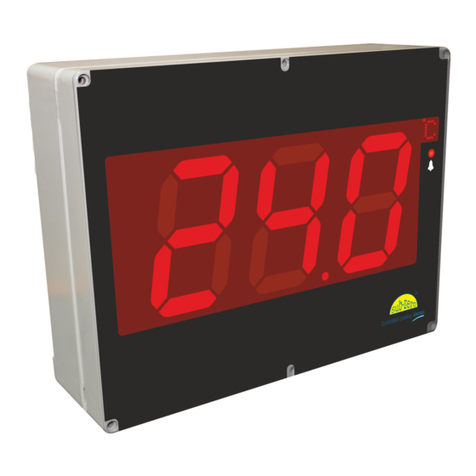
Sub-Zero
Sub-Zero SZ-81145 user manual
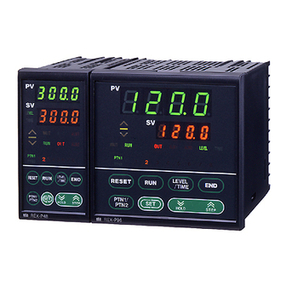
RKC INSTRUMENT
RKC INSTRUMENT REX-P48 Series Operation manual
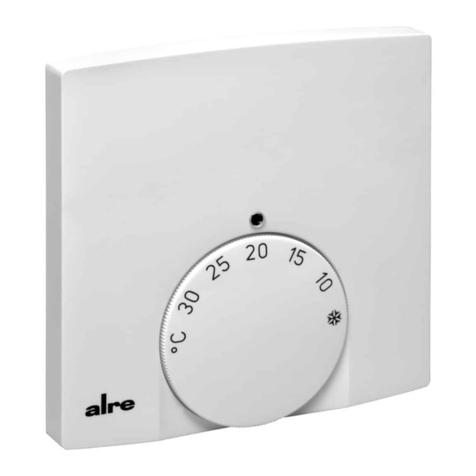
alre
alre FTRFB-280 Series manual
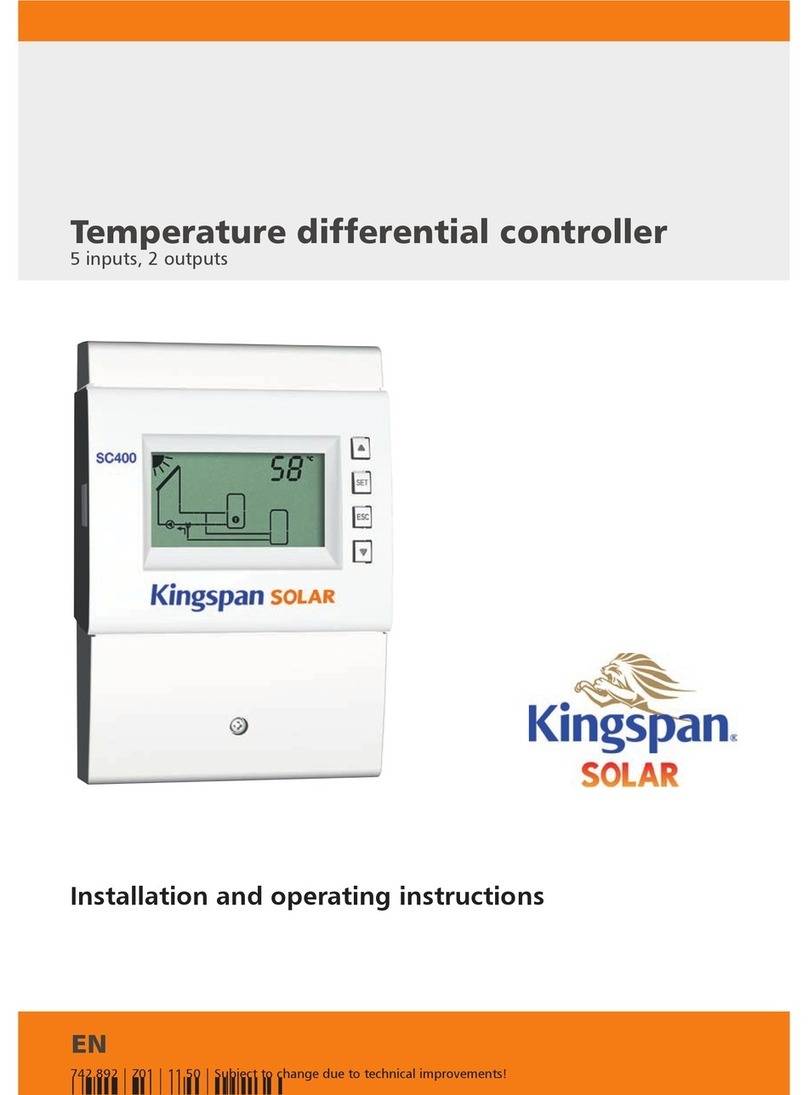
Kingspan
Kingspan Temperature differential controller Installation and operating instructions
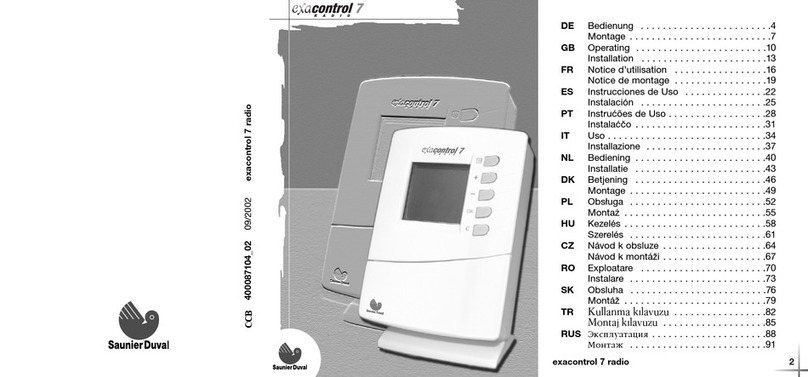
Saunier Duval
Saunier Duval exacontrol 7 manual
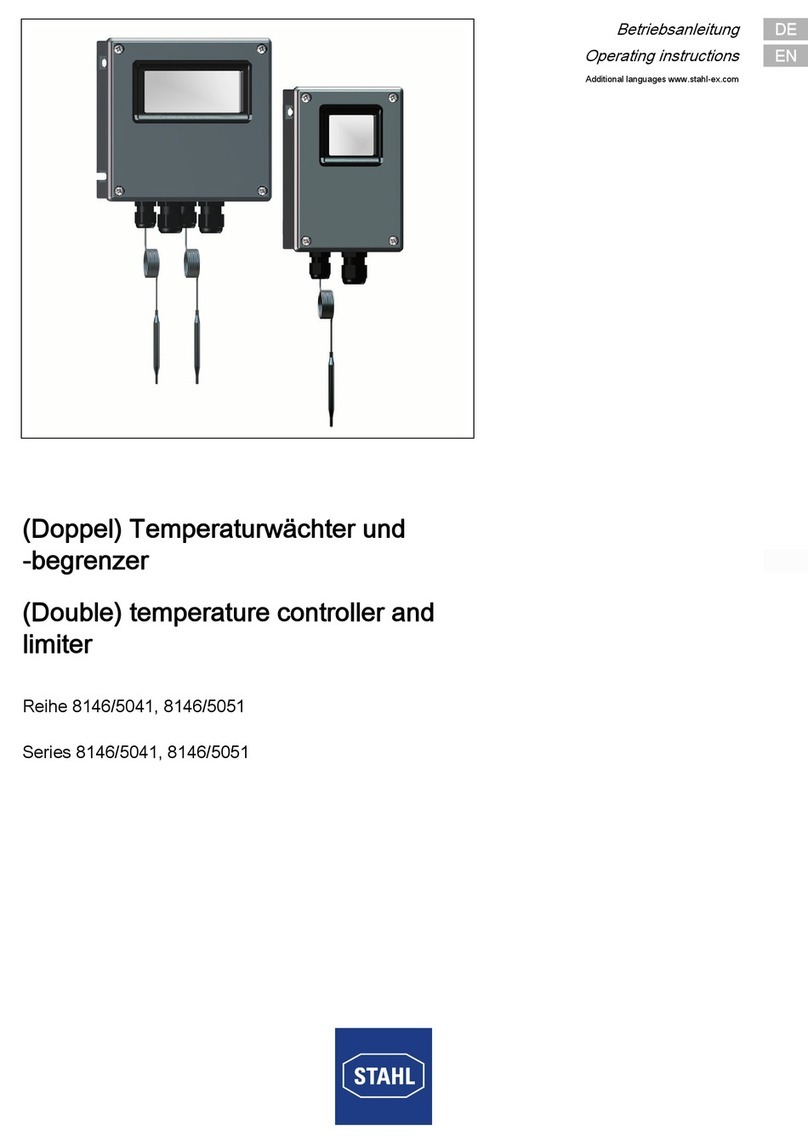
Stahl
Stahl 8146/5051 Series operating instructions
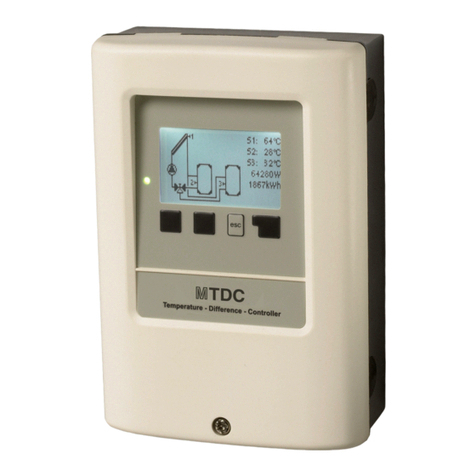
Sorel
Sorel MTDC Installation and operating instructions
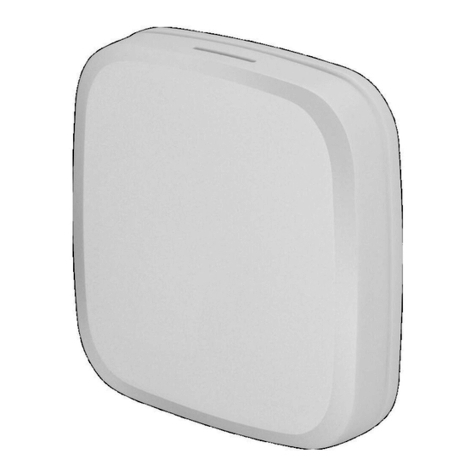
STIEBEL ELTRON
STIEBEL ELTRON EASYTRON Connect ERT instructions
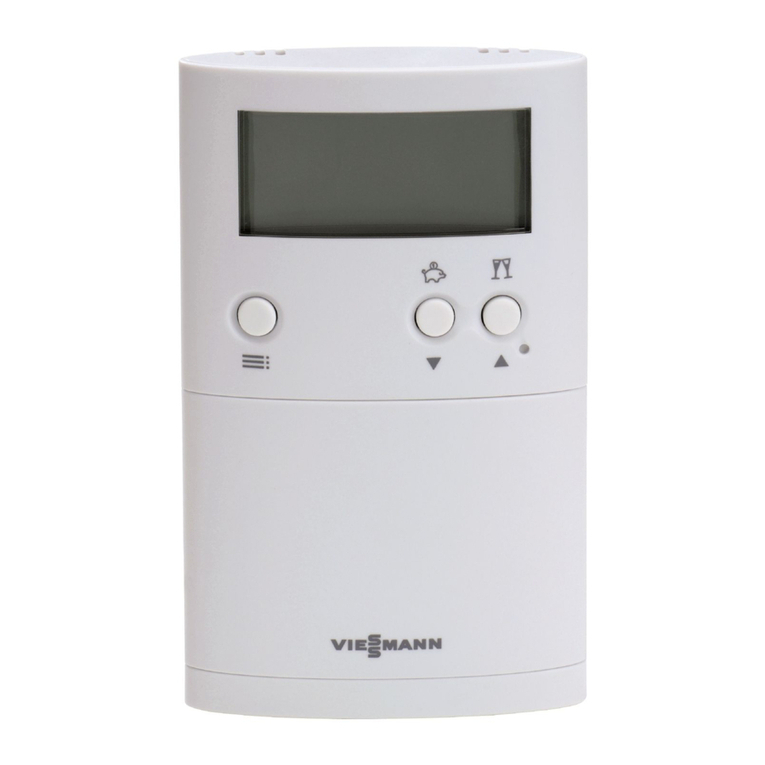
Viessmann
Viessmann VITOTROL 100 Operating Instructions for the System User
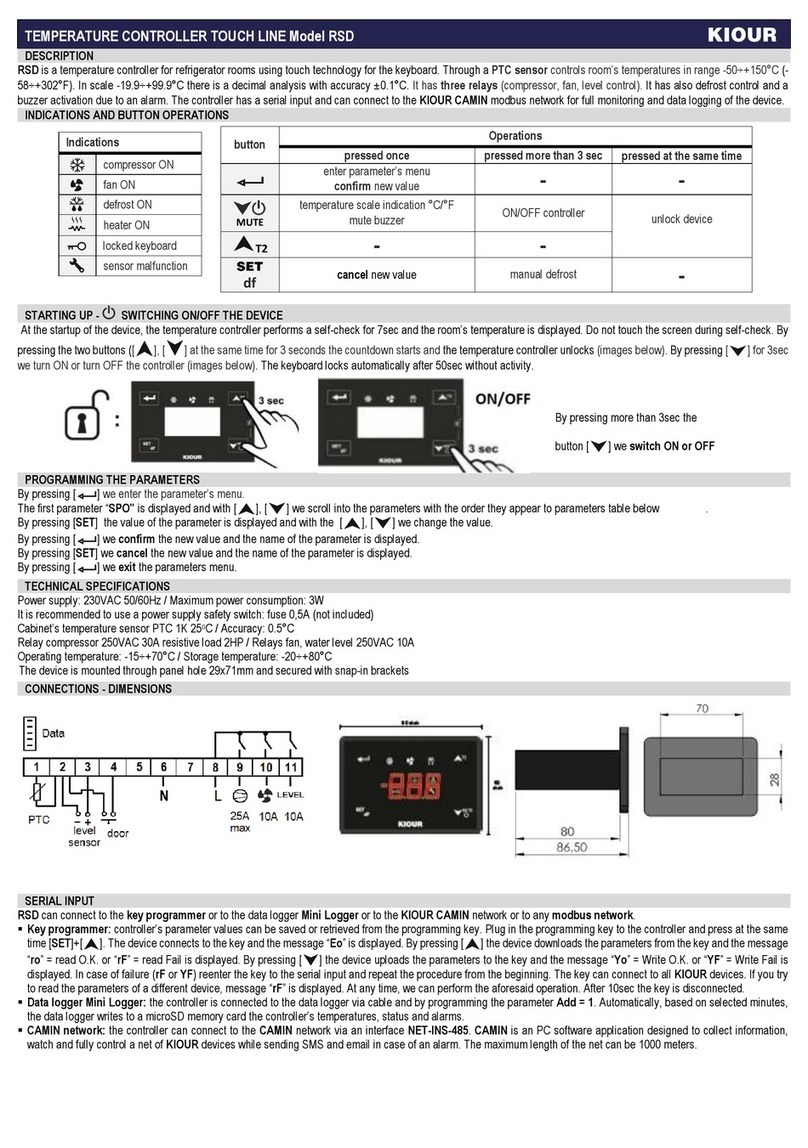
KIOUR
KIOUR RSD quick start guide
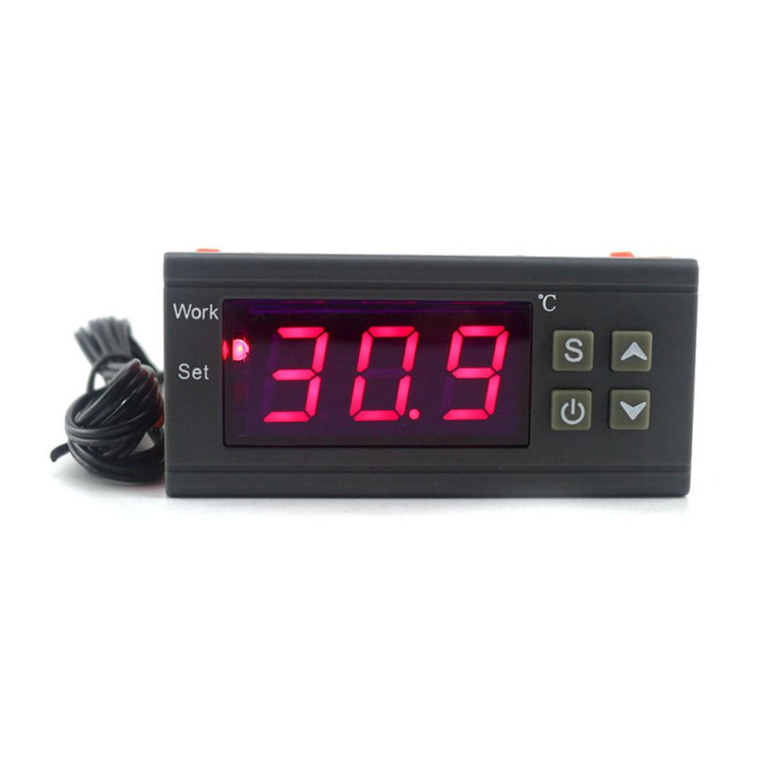
Ketotek
Ketotek KT1210W operating manual
